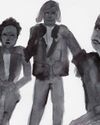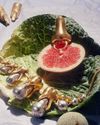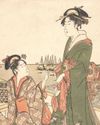
It was october in Tashkent. The broad Soviet-style avenues of Uzbekistan’s capital were lined with chestnut and Oriental plane, their leaves turning russet in the crisp autumn air. This city of 2.5 million had, in Soviet days, which lasted from the 1920s until the country’s independence in 1991, been the premier capital of Central Asia. It is home to more than half of Uzbekistan’s 116 universities, and on that first golden morning in Tashkent, there was something of the glazed perfection of a Soviet propaganda poster in the sight of students in twos and threes strolling down the runway-size avenues. They were dwarfed by the giant buildings that lined the roads — banks, museums and ministries — “Babylonian blocks,” as the English writer Philip Glazebrook, who had been in Tashkent at the end of Soviet rule, described them in “Journey to Khiva” in the early ’90s: “Since the days of Nineveh this has been the architecture of dictatorship and persecution.” And so it was, but after my late arrival on the Turkish Airlines flight from Istanbul, I found myself oddly in sympathy with the ideal, if not the reality, of Soviet life.
Four great creeds — Zoroastrianism, Buddhism, Islam and Communism — had come via the trans-Asian caravan routes, or the Silk Road, to the land encapsulated by what is modern Uzbekistan. Each had made the people of this doubly landlocked country — one of only two, the other being Liechtenstein — of 34 million part of a greater world, a cosmopolis, a comity of nations. This was a land whose culture had been created on the frontier of contact with China, India, Iran and Russia, each of which fertilised the culture of the steppe. Communism was the last ideology to come to Uzbekistan along these routes, and I could not help but admire the scale and ambition of its artifacts.
This story is from the August 2020 edition of T Singapore: The New York Times Style Magazine.
Start your 7-day Magzter GOLD free trial to access thousands of curated premium stories, and 8,500+ magazines and newspapers.
Already a subscriber ? Sign In
This story is from the August 2020 edition of T Singapore: The New York Times Style Magazine.
Start your 7-day Magzter GOLD free trial to access thousands of curated premium stories, and 8,500+ magazines and newspapers.
Already a subscriber? Sign In

Look At Us
As public memorials face a public reckoning, there’s still too little thought paid to how women are represented — as bodies and as selves.

Two New Jewellery Collections Find Their Inspiration In The Human Anatomy
Two new jewellery collections find their inspiration in the human anatomy.

She For She
We speak to three women in Singapore who are trying to improve the lives of women — and all other gender identities — through their work.
Over The Rainbow
How the bright colours and lively prints created by illustrator Donald Robertson brought the latest Weekend Max Mara Flutterflies capsule collection to life.

What Is Love?
The artist Hank Willis Thomas discusses his partnership with the Japanese fashion label Sacai and the idea of fashion in the context of the art world.

The Luxury Hotel For New Mums
Singapore’s first luxury confinement facility, Kai Suites, aims to provide much more than plush beds and 24-hour infant care: It wants to help mothers with their mental and emotional wellbeing as well.

Who Gets To Eat?
As recent food movements have focused on buying local or organic, a deeper and different conversation is happening among America’s food activists: one that demands not just better meals for everyone but a dismantling of the structures that have failed to nourish us all along.

Reimagining The Future Of Fashion
What do women want from their clothes and accessories, and does luxury still have a place in this post-pandemic era? The iconic designer Alber Elbaz thinks he has the answers with his new label, AZ Factory.

A Holiday At Home
Once seen as the less exciting alternative to an exotic destination holiday, the staycation takes on new importance.
All Dressed Up, Nowhere To Go
Chinese supermodel He Sui talks about the unseen pressures of being an international star, being a trailblazer for East Asian models in the fashion world, and why, at the end of the day, she is content with being known as just a regular girl from Wenzhou.